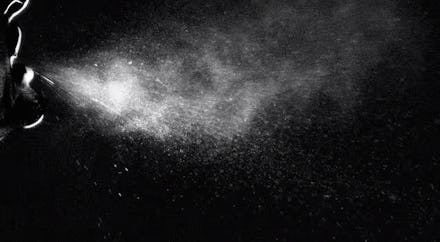MIT Scientists Reveal a Simple Sneeze Is Far More Dangerous Than You Think

The news: Science has finally settled the best way to sneeze: into something.
A novel study by MIT researchers found that sneezes generate "multiphase turbulent buoyant clouds," which send potentially-infectious snot droplets way further than previously thought. The researchers now believe that smaller droplets in a sneeze or cough might travel 200 times farther than if they were simply groups of unconnected particles, as previous estimates assumed they were.
The scientists used advanced image processing and physics algorithms to produce a "new analysis of coughs and sneezes from a fluid-mechanics perspective." That image processing is the stuff of nightmares:
Image Credit: Sploid
"When you cough or sneeze, you see the droplets, or feel them if someone sneezes on you," MIT applied mathematics professor John Bush, who is co-authoring a new paper on the subject, told MIT News. "But you don't see the cloud, the invisible gas phase. The influence of this gas cloud is to extend the range of the individual droplets, particularly the small ones."
"If you ignored the presence of the gas cloud, your first guess would be that larger drops go farther than the smaller ones, and travel at most a couple of meters," Bush continued. "But by elucidating the dynamics of the gas cloud, we have shown that there's a circulation within the cloud — the smaller drops can be swept around and resuspended by the eddies within a cloud, and so settle more slowly. Basically, small drops can be carried a great distance by this gas cloud while the larger drops fall out. So you have a reversal in the dependence of range on size."
Sneeze on the loose: Especially small particles (<50 micrometers) may even reach air ventilation units, possibly spreading pathogenic joy across entire workplaces. As a result, people about to sneeze should really consider using a napkin, hankerchief or the crook of their elbow rather than simply into their hands.
Here's the video:
The research has serious implications: Bourouiba is trying to use the data to understand the mechanisms behind epidemics, while architects and engineers may want to examine the results to design workplace layouts that minimize the spread of disease. Hospitals could use the data to help keep infectious diseases away from other patients. And air circulation systems for enclosed spaces (planes, trains, etc.) might need to be redesigned to reduce the chances of spreading diseases between passengers.